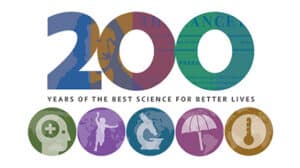The technology helps autistic individuals overcome their phobias and understand their surroundings better by bridging the physical and digital worlds
Roughly a year ago, a rehabilitation center that works for children with Mental Retardation, Developmental Delays, and Genetic Disorders in Chinchwad, near Pune, introduced the Road Crossing Project using Augmented Reality (AR) technology to improve the functional capabilities of autistic children. It was used primarily to make these children more independent, especially while crossing the road.
Within a few months of launching and adopting AR technology at the centre, the instructors started to witness transformative results.
“There’s been a sharp uptick in the receptivity of the children to the therapy,” said Kanchan Vaidya, a counsellor at the centre. “Apart from boosting their confidence levels, the program is helping them lead independent and fulfilling lives.”
With the AR, the digital information (images, audio, and text) is superimposed on real-life situations and events, using mobile devices or headsets and high-tech glasses. The combination of technology and tools helps autistic individuals overcome their phobias and understand their surroundings better by bridging the physical and digital worlds.
“The idea behind launching this Road Crossing Project was to teach these children basic navigation skills and make them feel more confident while they are on the road,” Vaidya said. “Using AR-based therapies, we trained these children to recognize various vehicles through their sounds and also taught them the traffic signal rules.”
Though AR/VR-based technology has only gained attention recently, its impact on individuals with Autism Spectrum Disorder (ASD) and other sensory processing disorders isn’t exactly new. In 1996, researchers like Barbara Strickland theorized that virtual reality could help autistic people develop social awareness skills. Preliminary studies in the nineties showed promising results, but at the time, developing AR/VR technology was expensive. Besides, the headsets were bulky and uncomfortable.
But the technology has now become very advanced. The 3D technology contributes to improving identification as well as navigational skills. It increases engagement, motivation and learning for children with ASD.
“Children with autism can be quite restless and uneasy. Therefore, it can be challenging for instructors to make the learning experience engaging and fun,” Senior Neurosurgeon and Managing Director, IBS Hospital, New Delhi, Dr Sachin Kandhari said. “Fortunately, the use of advanced technology such as AR/VR-based tools has shown positive outcomes in a variety of situations.”
With the use of mobile devices or headsets, the AR supports and facilitates communication, increases learning motivation, attention, and independence, and benefits children with autism in their educational experience.
Since autism deals with a variety of symptoms, different tech support tools are needed to address different kinds of challenges so that these individuals can lead normal life. While some children may show positive responses to assistive technology (AT), such as devices used to help communicate using pictures or pre-recorded speech texts; others may benefit from augmented learning tools.
How challenging is it to develop technology for children with special needs?
“It’s more of a responsibility than a challenge and requires a lot of unlearning so that we are able to keep things simple, yet appealing and effective for children with special needs,” said Saurabh Sameer, Director of Custom Technologies, a Mumbai-based multidisciplinary firm that incorporates design and storytelling with immersive technologies.
“The tailored technology that’s being used at our centre was developed after identifying all aspects of one-on-one care that these individuals require on a daily basis. We built this innovative tech-support solution keeping in mind the comfort of both – the therapists as well as the children with special needs,” Sameer added.
Also read: India’s first depression surgery post mental health Act 2017


















Add Comment